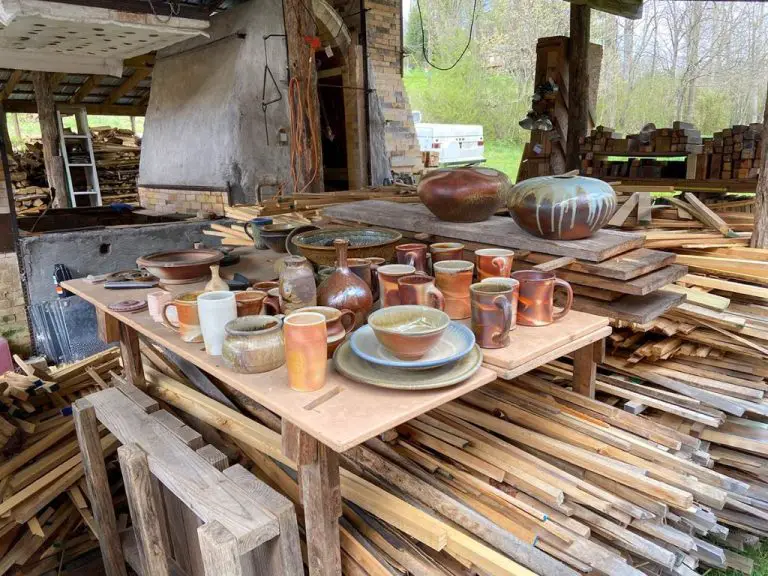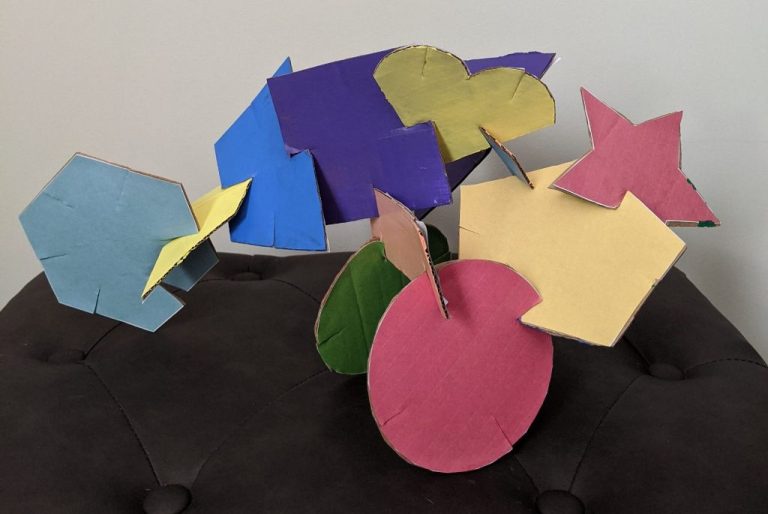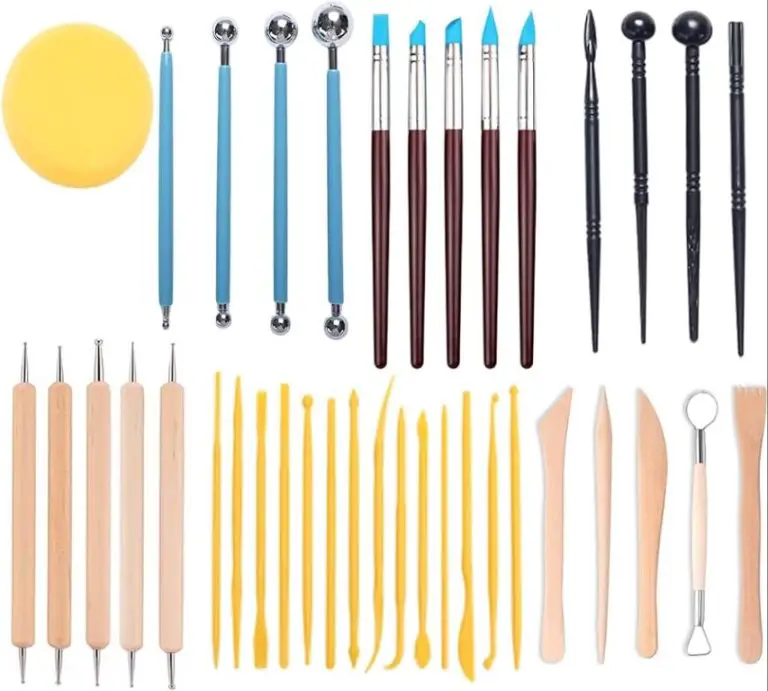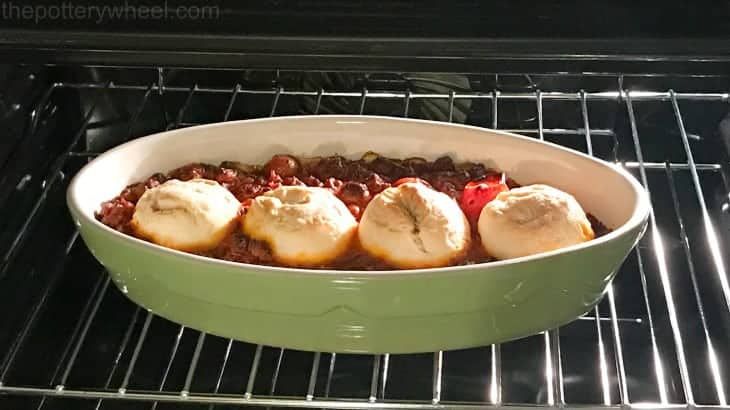What Is An Ovenproof Baking Dish?
What is an Ovenproof Baking Dish?
An ovenproof baking dish is a type of bakeware designed to withstand high oven temperatures (via Dictionary.com). Ovenproof bakeware is made from materials that can resist heat without cracking, warping, or melting. Common ovenproof baking dish materials include ceramic, glass, stoneware, cast iron, and stainless steel.
Ovenproof baking dishes allow you to start a recipe on the stovetop and finish baking it in the oven. For example, you may brown ground beef for a casserole in an ovenproof dish on the stovetop before adding other ingredients and baking it in the oven. The ovenproof dish can go directly from stovetop to oven without any issues. An ovenproof label on bakeware indicates it’s safe for oven use.
In summary, an ovenproof baking dish is designed to be heated to baking temperatures in the oven without damage. Its ovenproof properties allow versatile use from stovetop to oven.
Materials
Ovenproof baking dishes come in a variety of materials, each with their own properties and advantages. Some of the most common materials for baking dishes include:
- Ceramic – Ceramic baking dishes provide even heating and heat retention. They come in a variety of colors and designs. However, they can crack or chip if dropped. Sources: https://www.qfc.com/blog/food/guide-to-baking-dishes
- Glass – Glass baking dishes allow you to see the food as it cooks. They provide even heating but less heat retention than ceramic. Glass can break if dropped. Source: https://www.webstaurantstore.com/guide/566/types-of-muffin-baking-pan-materials.html
- Metal – Metal baking dishes like aluminum and stainless steel heat up quickly and evenly. However, they provide less heat retention than ceramic or glass. Stainless steel is more durable than other metals.
Sizes and Shapes
Ovenproof baking dishes come in a variety of standard sizes and shapes to suit different baking needs. Some of the most common sizes are:
- 8×8 inch – This size square baking pan holds around 1.5 quarts and is good for making small batches of brownies, bars, and other baked goods. It’s also called an 8-inch square pan. (Source)
- 9×13 inch – The most popular rectangular baking pan size, holding around 3 quarts. It’s ideal for recipes like cakes, casseroles, and roasted vegetables. Also referred to as a 9×13-inch baking dish. (Source)
- 9×9 inch – Another common square pan for brownies, cakes, and other treats. It holds around 2 quarts. (Source)
In addition to square and rectangular shapes, ovenproof baking dishes come in rounds, ovals, and specialty shapes like loaf, bundt, and fluted tube pans.
The depth of baking dishes varies too. Shallow pans are best for foods needing more surface area like cookies while deeper dishes work well for batters, casseroles, and dishes needing to hold liquid. Standard depths range from 1 to 3 inches. (Source)
Temperature Resistance
Ovenproof baking dishes are designed to withstand high temperatures, usually in the range of 350-500°F depending on the material. This makes them suitable for most baking, roasting, and broiling applications. However, they may not be suitable for use under a broiler which can reach temperatures over 500°F.
According to Amazon, ceramic baking dishes like those from Frewinky can withstand temperatures up to 2400°F. Meanwhile, glass baking dishes may be limited to 450°F as noted for the Au Gratin baking dishes on Amazon. It’s important to check the specifications of your specific baking dish to understand the temperature limits.
Exceeding the recommended temperature limit can cause the baking dish to crack or shatter. Staying within the temperature resistance range ensures safe, reliable performance for baking and roasting.
Uses
Ovenproof baking dishes are extremely versatile and can be used for a variety of baking recipes. Some of the most common uses include:[1]
- Casseroles – Baking dishes are ideal for making casserole recipes, allowing all the ingredients to cook together in one pan.
- Lasagnas – You can assemble and bake lasagna in a baking dish, which keeps all the layers contained.
- Roasting vegetables – Roasting vegetables in a baking dish allows them to cook evenly surrounded by hot air.
- Baking desserts – Recipes like cobblers, crisps, buckles, and crumbles are often baked in ovenproof baking dishes.
- Meatloaf – A loaf pan shape baking dish is perfect for baking meatloaf.
- Mac and cheese – Ooey-gooey mac and cheese bakes up nicely in a baking dish.
- Pot pies – You can bake homemade pot pies in ramekins or small ovenproof baking dishes.
Ovenproof baking dishes allow for even surround heat exposure to thoroughly cook recipes. Their high sides also prevent spills and contain sauces.
Advantages
Ovenproof baking dishes offer several advantages that make them a useful addition to any kitchen.
One major benefit is their ability to distribute heat evenly throughout the dish. Materials like ceramic, glass, and enameled cast iron heat gradually and maintain temperature consistency (https://medium.com/@ct954345/the-benefits-of-using-oven-safe-dishes-in-your-cooking-4bc5b8e18229). This allows food to cook thoroughly without burning or overcooking.
The oven-to-table versatility of these dishes is also a plus. Baked casseroles and other one-dish meals can go straight from the oven to the dining table for easy serving. There’s minimal hassle since the dish is presentable enough to be served right in the pan (https://medium.com/@arthurmarshallm22/benefits-of-using-oven-safe-dishes-in-your-everyday-cooking-b5426ea1630e).
Additionally, ovenproof bakeware streamlines cooking by enabling everything to cook in one pan. This saves on cleanup since there are fewer dishes to wash afterwards.
Care and Maintenance
Properly caring for your ovenproof baking dish will ensure it lasts a long time. Here are some best practices for cleaning and storing your bakeware:
Allow the baking dish to completely cool before washing. Exposing it to water while still hot can lead to cracking or shattering due to thermal shock. Be patient and let it rest until it reaches room temperature.
Never immerse a hot glass baking dish in cold water as this can also cause it to break. The temperature change creates rapid expansion and contraction in the glass, putting stress on it.
Wash ovenproof baking dishes by hand using warm, soapy water and a soft cloth or sponge. Avoid abrasive scrubbers or harsh chemicals which can scratch the surface. Instead, allow any stuck-on food to soak before gently scrubbing. For tough stains, let the pan soak for 30 minutes in hot water to loosen debris.
Some ovenproof baking dishes are not dishwasher safe, so always refer to the manufacturer’s instructions. If using a dishwasher, use a gentle cycle and cautious loading to avoid chipping.
After washing, be sure the baking dish is completely dry before storing to prevent moisture damage over time. Air drying is best.
Avoid storing glass or ceramic baking dishes in areas with extreme temperature fluctuations. The expansion and contraction can cause stress and cracks. Store in a secure cupboard at room temperature.
With proper care focusing on gradual temperature changes, cautious washing, thorough drying, and room temperature storage, an ovenproof baking dish can be enjoyed for years to come. Always refer to the manufacturer’s recommendations as well.
Safety Tips
When using ovenproof baking dishes, it’s important to follow some key safety tips:
Always use potholders or oven mitts when handling hot baking dishes. The dishes can get extremely hot coming out of the oven. Potholders protect your hands from burns. Check baking dishes for any cracks or damage before using. Cracks can cause the dish to break when exposed to high oven temperatures. Make sure the baking dish is ovenproof and can withstand the baking temperature you plan to use. Many materials like plastics and lower quality glass cannot safely go in the oven. Verify the maximum oven safe temperature for your dish (source).
Allow plenty of time for the baking dish to cool before touching it or placing it on a counter. Do not add cold liquids to a hot baking dish as it can cause cracks or breakage. Avoid extreme temperature changes like putting a hot dish straight into cold water. Let the dish cool naturally first. Always place hot baking dishes on dry, heat-safe surfaces – never on a wet counter or towel.
Popular Recipes
Ovenproof baking dishes are perfect for making delicious and comforting baked dishes. Here are some recipe ideas that are well-suited for this type of bakeware:
Cheesy Baked Ziti
This classic Italian dish of pasta, tomato sauce, and melted cheese is perfect for feeding a crowd. Try this easy Cheesy Baked Ziti recipe.
Chicken Pot Pie
Make a homemade chicken pot pie with biscuit topping baked right in the dish. Get the recipe here.
Lasagna
You can’t go wrong with classic meaty lasagna loaded with sauce, noodles, cheese, and your favorite fillings. Bake it to perfection in an ovenproof dish. Get Ina Garten’s famous lasagna recipe.
Shepherd’s Pie
This comforting casserole of ground beef, vegetables, and mashed potato topping is a winner baked in an ovenproof dish. Get the recipe.
Scalloped Potatoes
Creamy potatoes au gratin is easy to make and serve baked in an ovenproof dish. Get tips for the best scalloped potatoes.
Alternatives
If you don’t have an ovenproof baking dish available, there are several alternatives you can use for baking casseroles, gratins, and other oven-baked dishes:
- Cake pans – Round or square cake pans can work well, just watch the depth of your ingredients. Avoid overfilling to prevent spillovers.
- Muffin tins – For individual portions, greased muffin tins can bake gratins, mac and cheese, egg bakes, and more.
- Cast iron skillets – Preheated cast iron skillets provide even heating and crispy edges for dishes like skillet lasagna. Enameled cast iron works too.
- Saucepans – Shallow saucepans can bake egg dishes like frittatas. Use oven mitts when transferring the hot pan.
- Foil – Make a foil pan by molding heavy duty foil over an inverted baking pan. Foil won’t brown tops like a real baking dish.
With some creativity, you can improvise to bake casserole recipes without an ovenproof baking dish. But for best results, choose a vessel with oven-safe materials, adequate depth, and a shape similar to a baking dish. Refer to recipes for any special size recommendations.





